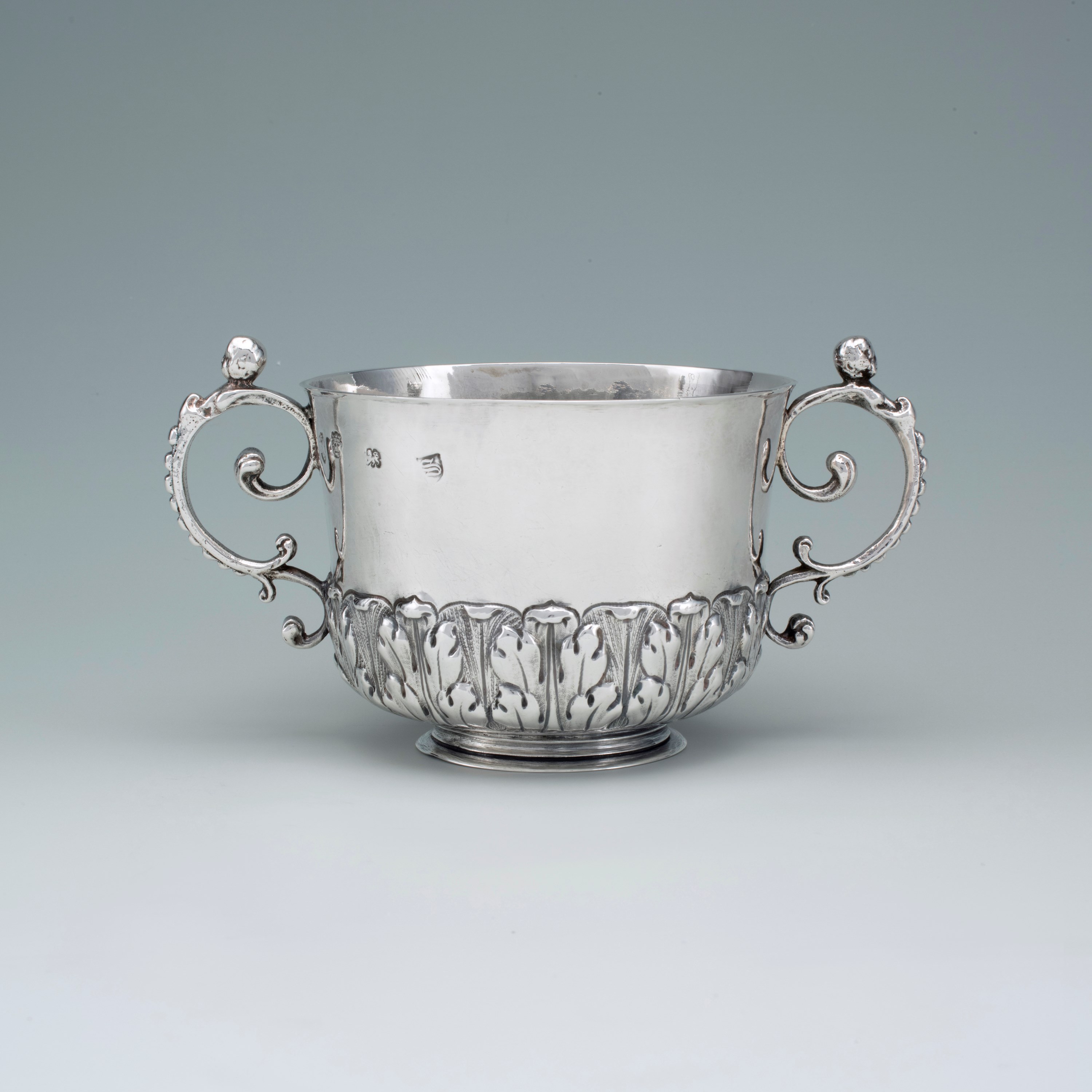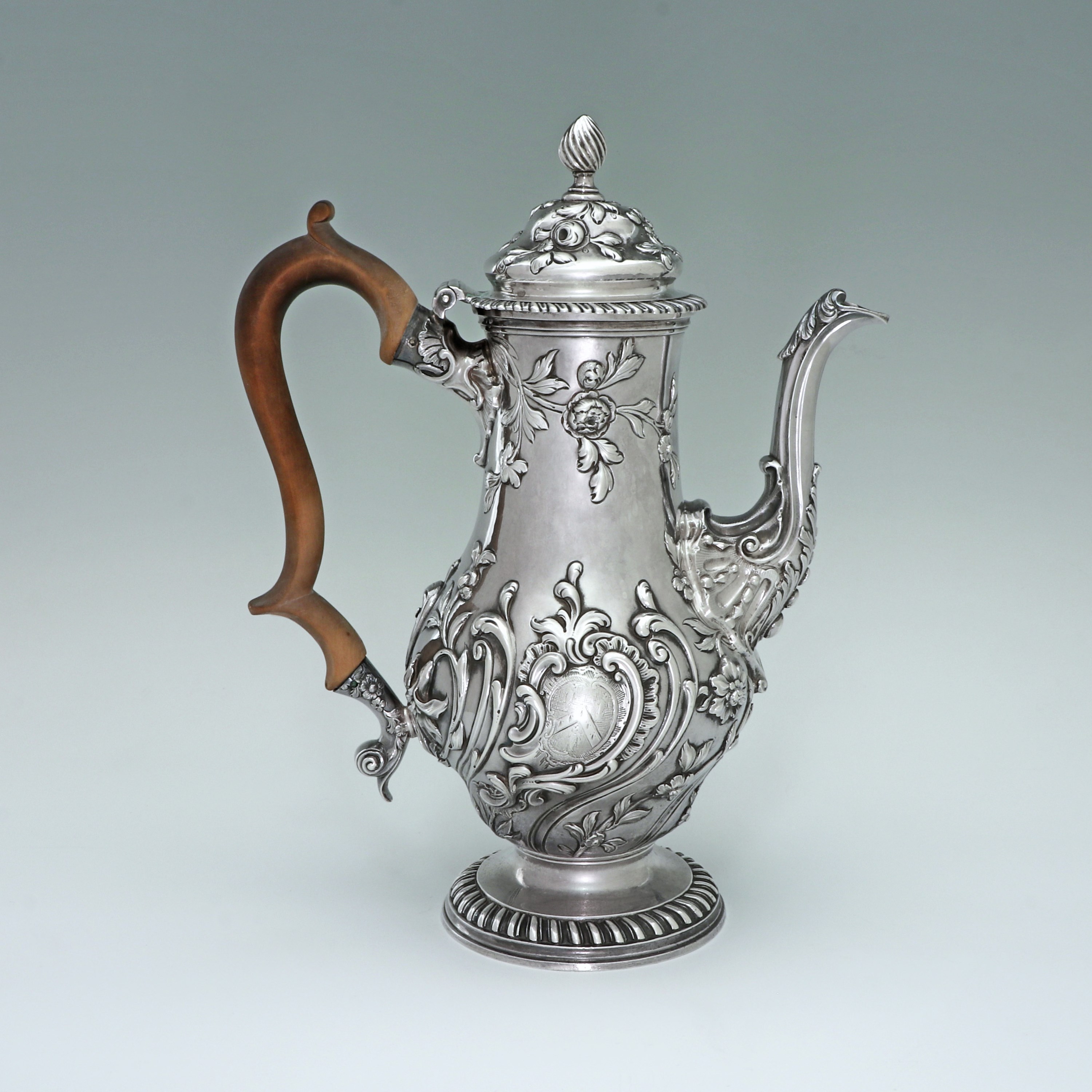Women in Silver
07 September 2023
ShareCasting a shine on the rare yet prolific women silversmiths
Emma Crichton-Miller
This year, among many other significant objects on their stand at Treasure House Fair, New York silver specialists S.J. Shrubsole had placed a beautiful silver porringer. Dated to 1675, during the reign of Charles II, it has two elegant, serpentine handles and the bottom third of the bowl is chased with lively acanthus leaves.
What makes the piece particularly interesting, however, is that it was made by a woman. Katherine Stevens was the wife of the goldsmith Roger Stevens of Foster Lane, who died very suddenly in 1673. Rather than slip into penury, Katherine took over the business, including the bound apprentice John Duck, who later married her daughter. Whatever the division of labour within this small family business, it is her mark, not that of the today better-known John Duck, that appears on this porringer, which has a degree of accomplishment that suggests it is not the work of her young apprentice.

A Charles II Antique English Silver Porringer, 1675 by Katherine Stevens
Courtesy of S.J. Shrubsole
That women figure importantly in British silversmithing in the eighteenth century has long been well known. In 1935, Sir Ambrose Heal, in his magisterial work The London Goldsmiths, determined that between 1697 and the Victorian era, a total of 63 women silversmiths, each with their own registered mark, worked in London alone. He also revealed that many of these women had definite trade designations in the records: they were not just widows running their late husband’s businesses but hands-on designers and craftsmen. Among the most famous are Louisa Perina Courtauld, Eliza Godfrey and Hester Bateman, but these just mark the peaks of a booming trade that was nation-wide. Another piece shown by Shrubsole was as extraordinarily large silver tray, hand-rolled, from 1729, with the mark of Sarah Parr, widow of Thomas Parr I. Philippa Glanville, formerly chief curator of the metal, silver and jewellery department at the Victoria and Albert Museum and co-author of the 1990 volume ‘Women Silversmiths 1685-1845’ has noted other names elsewhere - for instance, Welthian Goodyear, a Bristol spoonmaker, Ellen Dare of Taunton and Elisabeth Haselwood of Norwich. Furthermore, as Lewis Smith of London dealership Koopman Rare Art suggests, “There must have been other women who never gained a mark - the workshop of a silversmith was not a genteel place and there would have been female workers and family members.”
The collectors’ market is focused inevitably on the finest silver, those pieces which have survived multiple disasters of war and bankruptcy. The greatest boost to British goldsmithing in the early eighteenth century was undoubtedly the arrival of highly skilled Huguenot craftsmen, fleeing religious persecution in France. Elizabeth Godfrey, for instance, born Elizabeth Pantin in 1720, was the daughter of the distinguished Huguenot silversmith Simon Pantin. Her first husband, Abraham Buteux, was also a goldsmith from the French immigrant community. Elizabeth registered her first mark as Elizabeth Buteux in 1731, designed, as was customary, in a lozenge shape, to denote a widow, presumably after her husband died. She carried on her first husband’s silver business until her marriage to another goldsmith, Benjamin Godfrey, in 1732. Elizabeth registered a second mark as Elizabeth Godfrey in 1741, presumably when Benjamin died. The majority of her work is in the flamboyant French rococo style then becoming popular in England amongst the wealthy. Smith says of her, “By comparison with the work of her second husband, Benjamin, Eliza Godfrey’s work has a certain finesse.” The set of three monumental sugar casters by her they currently have “are the best rococo casters we have ever had - the quality of the chasing alone.”
_T638296044245286295.jpg)
A Monumental Set of Three 18th Century Rococo Casters by Elizabeth Godfrey
Courtesy of Koopman Rare Art
Louisa Courtauld, born in 1729, was also of Huguenot extraction. Her father, Pierre Abraham Ogier, was a silk weaver, who brought his family to London when she was a child. Her husband, Samuel Courtauld, was the son of Augustin Courtauld, a Huguenot metalsmith. A portrait of Louisa Courtauld from the 1770s, grandly posed in silk, testifies to the strength of the Courtauld business, appealing to the highest ranks in society. A year after her husband died, in 1766, Courtauld registered her own mark, continuing to run the business until she created a new joint mark with her son, Samuel Courtauld II, in 1777. Courtauld was not an unusual figure in eighteenth century London. In 2019 an exhibition running through the City of London displayed the business cards of the many women entrepreneurs from the period, beside their original premises. The exhibition’s curator, University of Cambridge historian Dr Amy Louise Erickson, commented: “There was nothing unusual about these businesswomen at the time. They were members of trade families and it was normal for women to be in charge. This history has been completely overlooked.”

A George III Antique English Silver Coffee Pot by Louisa Courtauld, 1764
Courtesy of S.J Shrubsole
Perhaps the most famous example is Hester Bateman. Born to a poor family in 1709, in 1730 she married John Bateman, a goldsmith and chainmaker, before inheriting his business on his death in 1760. After registering her mark in 1761, she built a formidable enterprise, helped by her children and apprentice John Linney. By using cost-efficient manufacturing methods, her workshops were able to turn out thousands of pieces - coffee pots, tea urns, cruets, teapots, salvers, goblets, salts, sugar tongs, and flatware - all of elegant but simple design, appealing to the middle classes.
_T638296043320105984.tif)
A Pair of George III Antique English Silver Wine Labels by Hester Bateman, c. 1770
Courtesy of S.J. Shrubsole
According to both Smith and Jim McConnaughy of S.J. Shrubsole, there is a strong interest in female silversmiths, especially in America, where, suggests Smith, they appeal especially to their fellow women entrepreneurs. The price differential between men and women silversmiths is negligible, says Lewis Smith.

